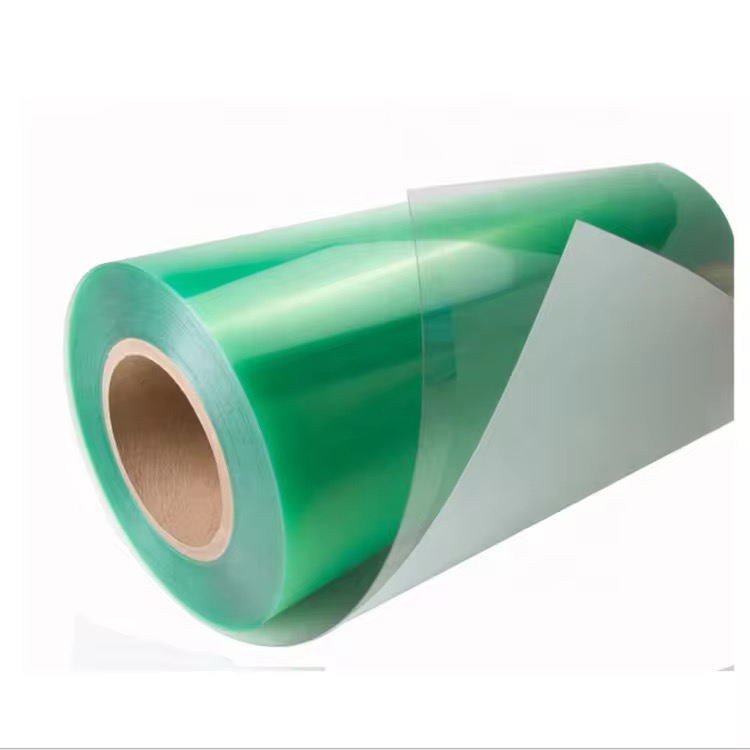
Przezroczysta folia poliwęglanowa: właściwości i zastosowania w drukowanych panelach sterowania i nie tylko
2025-06-23 16:01W opakowaniach folia PC jest stosowana do tacek na urządzenia medyczne, opakowań typu blister na elektronikę użytkową i pojemników na żywność ze względu na jej przejrzystość, wytrzymałość i odporność chemiczną. Jej zdolność do formowania termicznego w precyzyjne kształty sprawia, że idealnie nadaje się do niestandardowych opakowań, które chronią produkty podczas transportu. Na przykład producent urządzeń medycznych może użyć folii PC do tworzenia sterylnych, przezroczystych tacek na narzędzia chirurgiczne, zapewniając widoczność i bezpieczeństwo.
W dobrach konsumpcyjnych folia PC jest stosowana w trwałych produktach, takich jak butelki na wodę, soczewki okularowe i bagaż. Jej lekkość i odporność na stłuczenie sprawiają, że jest bezpieczniejszą alternatywą dla szkła, a jej drukowalność umożliwia tworzenie marek i projektów dekoracyjnych. Na przykład marka bagażu premium może używać folii PC do przezroczystych powłok z nadrukowanymi niestandardowymi wzorami, łącząc styl z trwałością. 
Wniosek
Przezroczysta folia PC to materiał, który stanowi przykład równowagi wytrzymałości, przejrzystości i wszechstronności. Wyjątkowa odporność na uderzenia, przejrzystość optyczna i możliwość drukowania sprawiają, że jest niezastąpiona w drukowanych deskach rozdzielczych, gdzie zwiększa bezpieczeństwo, funkcjonalność i estetykę. Poza zastosowaniami motoryzacyjnymi folia PC
'
s adaptability lśni w elektronice użytkowej, urządzeniach medycznych, oświetleniu i opakowaniach, udowadniając swoją wartość w różnych branżach. Wraz z rozwojem technologii i priorytetem zrównoważonego rozwoju, folia PC jest gotowa pozostać kluczowym graczem w kształtowaniu innowacyjnych, trwałych i atrakcyjnych wizualnie produktów. Wykorzystując jej unikalne właściwości, producenci mogą nadal przesuwać granice wzornictwa i wydajności, czyniąc folię PC materiałem, który naprawdę patrzy w przyszłość.
Transparent PC film boasts excellent light transmission, often exceeding 85% and rivaling glass in clarity. This property is critical for applications requiring visual precision, such as instrument panels or touchscreen displays. Unlike other plastics that may yellow over time, UV-stabilized grades of PC film maintain their transparency even under prolonged exposure to sunlight, making them ideal for outdoor use. For example, in backlit dashboards, PC film ensures vibrant, distortion-free visuals that enhance driver experience.
3. Thermoformability and Fabrication Ease
PC film is highly flexible and can be easily thermoformed, die-cut, or molded into complex shapes without compromising its structural integrity. It can even be cold-formed at room temperature for prototyping, a feature that sets it apart from brittle alternatives like acrylic. This versatility allows manufacturers to create intricate designs for dashboards, where curved surfaces and precise cutouts are often required. Additionally, PC film’s compatibility with standard woodworking tools simplifies fabrication, reducing production costs. 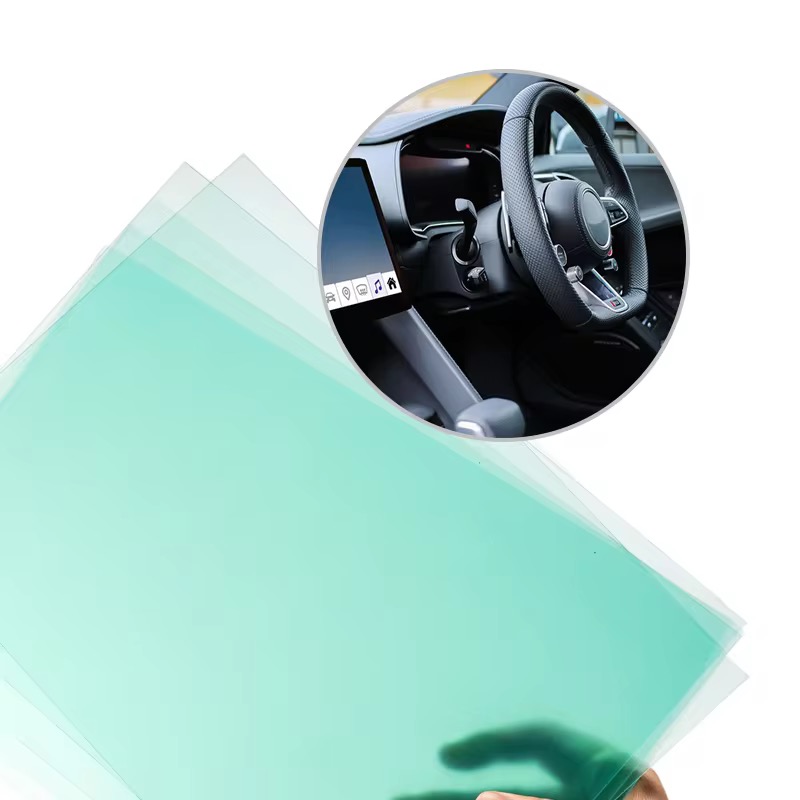
4. Excellent Printability
The surface of PC film exhibits superior ink adhesion, enabling high-quality printing without pre-treatment. Both silk-screen and digital printing methods can be used to apply vibrant graphics, logos, or functional markings. This property is particularly valuable in printable dashboards, where clear, durable graphics are essential for user interaction. For instance, automotive manufacturers use PC film to print speedometer dials and warning indicators, ensuring longevity even under frequent handling.
5. Thermal and Chemical Resistance
PC film maintains its mechanical properties across a wide temperature range, from -40°C to 120°C, and special grades can endure even harsher conditions. It also offers moderate resistance to chemicals like diluted acids and alcohols, though it is susceptible to strong solvents. Flame-retardant grades, such as Makrofol® FR 7-2, achieve UL94 V-0 ratings, making them suitable for safety-critical applications. In dashboards, this thermal stability ensures performance in extreme climates, from scorching deserts to freezing winters. 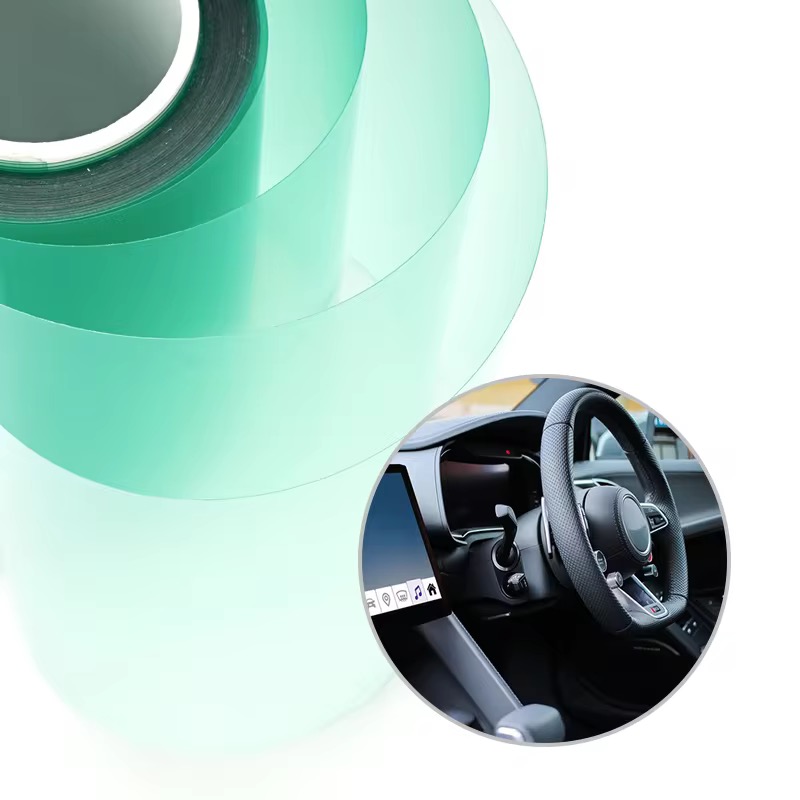
6. Light Diffusion Capabilities
Certain grades of PC film, such as Makrofol® LM, are engineered for light management, offering light-scattering or light-guiding properties. These films eliminate hotspots in backlit applications, providing uniform illumination. In dashboards, this ensures that displays are evenly lit, enhancing readability and aesthetic appeal. The ability to tailor light diffusion makes PC film a preferred choice for sophisticated lighting designs in automotive and consumer electronics. 
Applications of Transparent PC Film
1. Printable Dashboards in Automotive Industry
The automotive sector is one of the largest consumers of transparent PC film, particularly for printable dashboards. Modern vehicle dashboards integrate complex electronics, displays, and controls, requiring materials that combine durability, clarity, and printability. PC film meets these demands by serving as a substrate for graphic overlays, membrane switches, and backlit panels.
For example, in a high-end electric vehicle, the dashboard may feature a large, curved touchscreen interface. PC film is thermoformed to match the dashboard’s contours, printed with high-resolution graphics, and coated with a scratch-resistant layer to withstand daily use. Its impact resistance ensures that the display remains functional even in minor collisions, while its light diffusion properties guarantee uniform backlighting for night driving. Brands like LEXAN™ PC film are often used for their consistent printability and weather resistance, ensuring that printed graphics remain vibrant for years. 
Moreover, PC film’s lightweight nature contributes to vehicle efficiency. Compared to glass, PC film reduces the weight of dashboard components, improving fuel economy or extending the range of electric vehicles. Its ability to be customized with textures or coatings, such as anti-glare or anti-fingerprint finishes, further enhances its suitability for premium automotive interiors.
2. Touchscreen Displays and Consumer Electronics
In consumer electronics, PC film is a key material for touchscreen displays and protective covers. Its high clarity and impact resistance make it ideal for smartphones, tablets, and interactive kiosks. For instance, Excelite’s touchscreen PC film, available in thicknesses from 0.125mm to 1mm, is used in digital signage and automotive infotainment systems. These films can be customized with oleophobic coatings to resist fingerprints or matte finishes to reduce glare, improving user experience. 
In a practical scenario, consider a tablet used in a retail environment. The screen protector, made from PC film, withstands constant tapping and swiping while maintaining crystal-clear visuals. Its dimensional stability ensures that the film does not warp under heat from prolonged operation, and its printability allows for custom branding or instructional overlays.
3. Medical Devices and Safety Equipment
The medical industry leverages PC film’s biocompatibility, transparency, and sterilizability for applications like incubators, surgical instruments, and protective shields. Its impact resistance is critical for safety equipment, such as face shields used in hospitals or industrial settings. For example, AMGARD™ PC film incorporates antimicrobial agents to prevent bacterial growth, making it suitable for medical environments where hygiene is critical. 
In a real-world case, during the COVID-19 pandemic, PC film was widely used for protective barriers in hospitals and public spaces. Its clarity allowed for unobstructed communication, while its toughness ensured durability under frequent cleaning with disinfectants. The ease of fabrication enabled rapid production of custom-sized shields, demonstrating PC film’s adaptability in crisis situations.
4. Lighting and Signage
PC film’s light management capabilities make it a staple in lighting and signage applications. Makrofol® LM films, designed for light diffusion, are used in commercial lighting fixtures, menu boards, and retail displays. These films ensure even illumination, enhancing the visual appeal of backlit signs. In outdoor signage, UV-stabilized PC film resists yellowing and degradation, maintaining clarity and color fidelity over time.
For instance, a fast-food restaurant’s menu board may use PC film to display vibrant, backlit graphics. The film’s durability withstands daily cleaning, while its light diffusion eliminates glare, ensuring readability in various lighting conditions. Similarly, in architectural lighting, PC film is used to create sleek, energy-efficient fixtures that blend aesthetics with functionality. 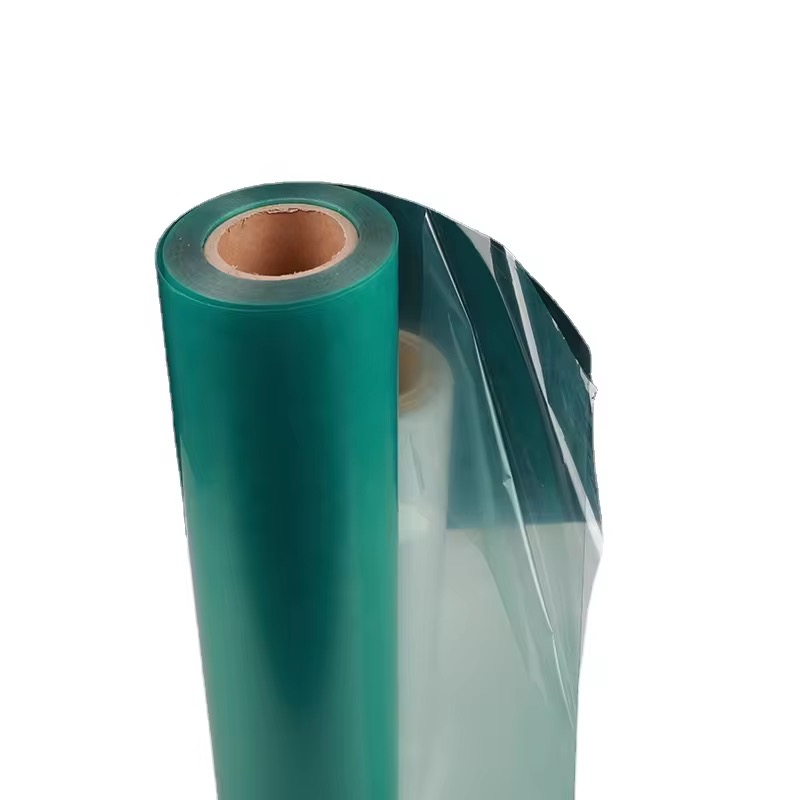
5. Packaging and Consumer Goods
In packaging, PC film is used for medical device trays, consumer electronics blister packs, and food containers due to its clarity, toughness, and chemical resistance. Its ability to be thermoformed into precise shapes makes it ideal for custom packaging that protects products during transport. For example, a medical device manufacturer might use PC film to create sterile, transparent trays for surgical tools, ensuring visibility and safety.
In consumer goods, PC film is found in durable products like water bottles, eyewear lenses, and luggage. Its lightweight and shatter-resistant properties make it a safer alternative to glass, while its printability allows for branding and decorative designs. For instance, a premium luggage brand might use PC film for transparent shells printed with custom patterns, combining style with durability. 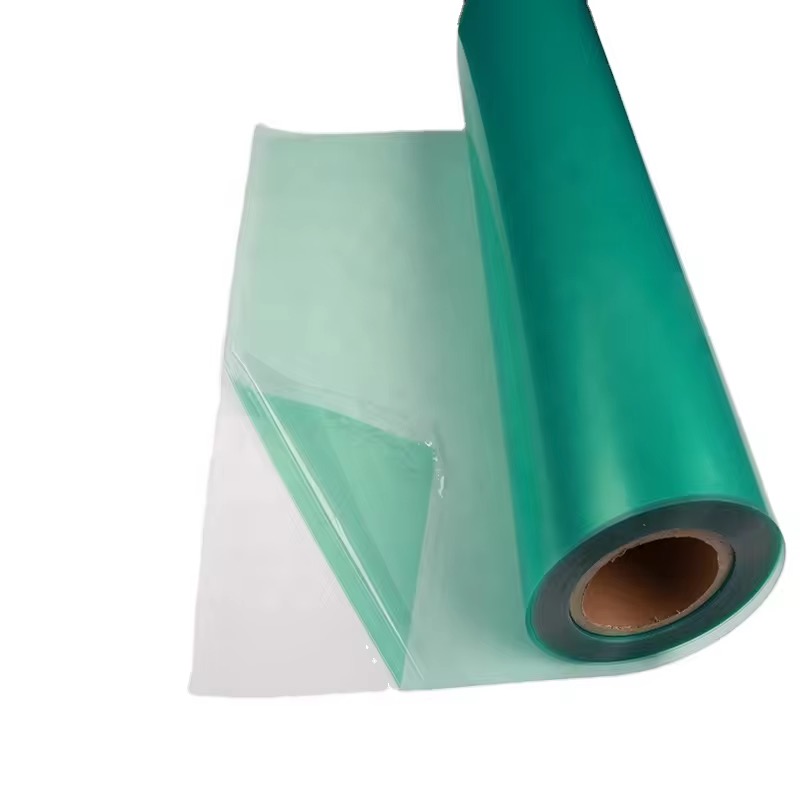
Conclusion
Transparent PC film is a material that exemplifies the balance of strength, clarity, and versatility. Its exceptional impact resistance, optical clarity, and printability make it indispensable in printable dashboards, where it enhances safety, functionality, and aesthetics. Beyond automotive applications, PC film’s adaptability shines in consumer electronics, medical devices, lighting, and packaging, proving its value across diverse industries. As technology evolves and sustainability becomes a priority, PC film is poised to remain a key player in shaping innovative, durable, and visually appealing products. By leveraging its unique properties, manufacturers can continue to push the boundaries of design and performance, making PC film a material that truly sees through to the future. 